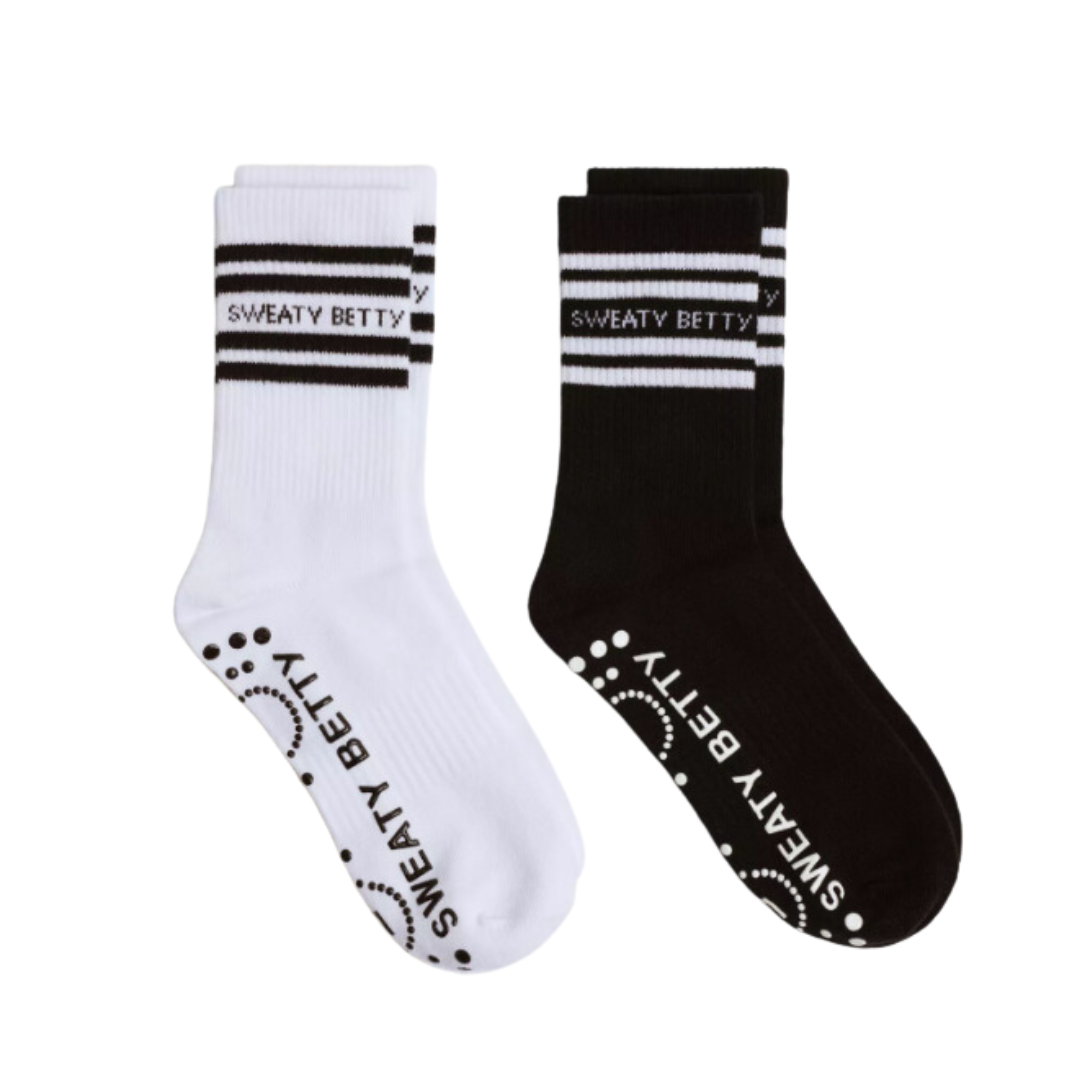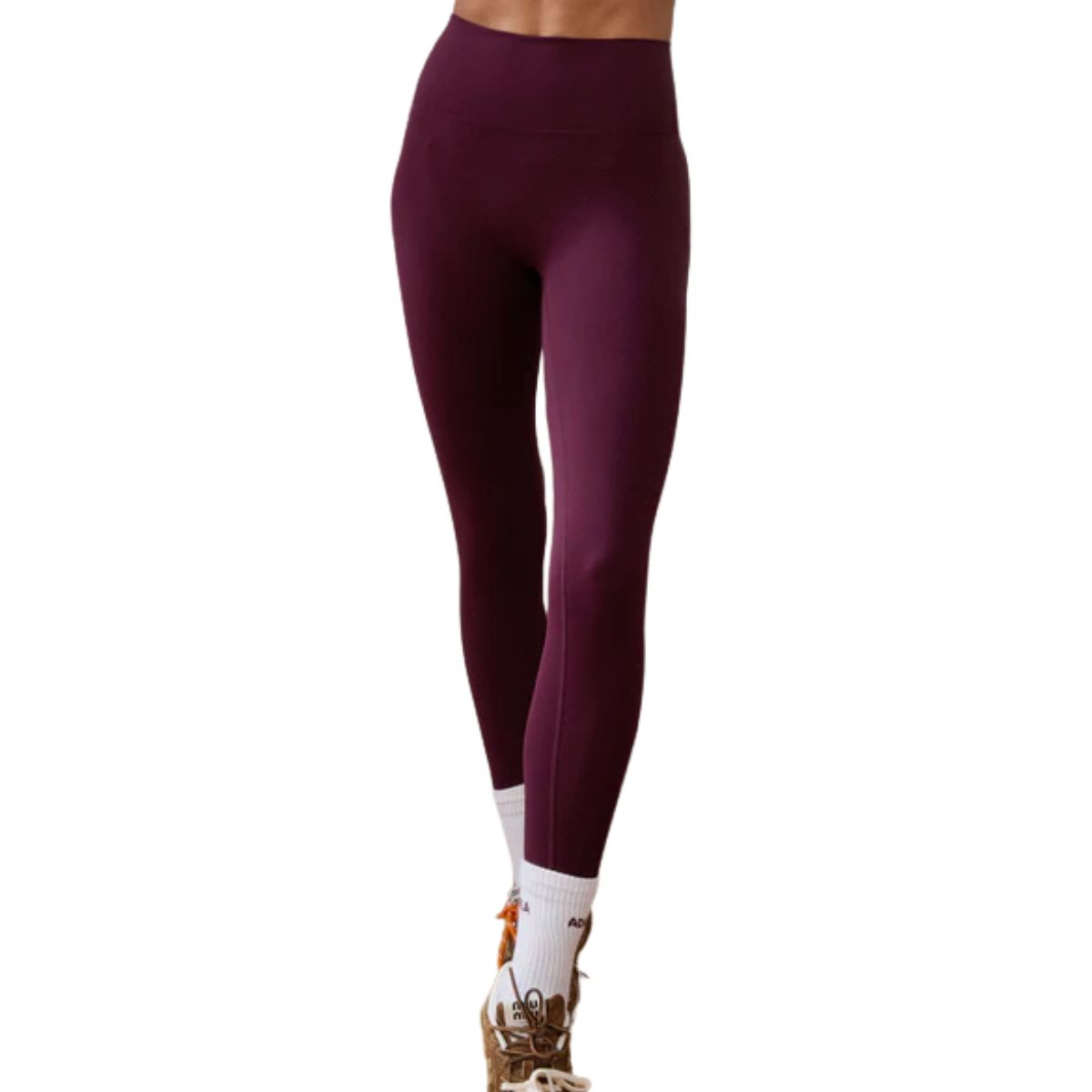Jen An, Gwyneth and Madonna All Love Tempo Pilates – Meet the Trending New Workout Supercharging Muscle and Tone
Your need-to-knows.


We're hurtling swiftly towards the end of 2025, but one thing that's showing no signs of going anywhere fast? Our penchant for Pilates. As if it wasn't already popular enough, this year has seen the rise and rise of the practice with ever more iterations springing up.
And the latest trend? Tempo Pilates is the hot topic on everyone's lips: it's rumoured that the Victoria's Secret Angels are fans, while we know that Pilates more generally has its fair share of celebrity devotees.
For the uninitiated, Tempo Pilates takes traditional Pilates moves (both Reformer and mat) and pairs them with high-energy music (hence the "Tempo" moniker), creating a workout that's as energetic as it is enjoyable. Originally developed by the London-based studio Tempo 301 back in 2010, Tempo Pilates is one hell of a workout, promising to leave you sweating.
More on the method below, but suffice to say that we're into it: studies (like this one, published in the journal Sports Medicine) show that the addition of music in both fast and slow strength training moves can improve both strength gains and neural adaptations, while further research (such as this randomised controlled trial, from the Journal of Sport and Exercise Psychology) reveals that music can help to boost endurance and increase adherence - although it should be noted that this is in relation to walking, rather than Pilates.
Suffice to say, we are intrigued enough to do a deep dive into the concept. We've enlisted the help of Tempo Pilates instructor Aleksandra Warburton as the go-to expert on the practice; she shares her wealth of knowledge below.
In the meantime, though, do check out our guides to all things Pilates: find out which Pilates clothes are worth your money, we ask, is Pilates becoming elitist, and discover the best Pilates boards for an effective home practice, here.
Tempo Pilates is trending for boosting muscle and tone - and it's easy to see why
What is Tempo Pilates?
If you're wondering how Tempo Pilates differs from all the other styles of Pilates there are to choose from, you're in the right place. And truth be told, there's not too much difference.
Celebrity news, beauty, fashion advice, and fascinating features, delivered straight to your inbox!
"Tempo Pilates is a contemporary adaptation of the classical repertoire, often described as 'movement to music',” explains Warburton, who is a Tempo Pilates instructor at Tempo 301. "It combines the precision and control of traditional Pilates with the energy and rhythm of music, creating a dynamic, flowing workout that builds strength, control and endurance. The focus remains on core engagement and form, but the tempo element brings a modern, motivating edge that keeps classes fresh and engaging."
@rebeccaroselife calling all pilates princesses, a must visit studio with an Ibiza vibes playlist! 📍TEMPO 301, Shoreditch
♬ i love vlada - harvey
What are the benefits of Tempo Pilates?
So far, so simple. But what are the benefits of a faster-paced class set to music? You'll be pleased to learn that, just like traditional forms of the practice, the benefits of Tempo Pilates are myriad.
1. It's a fun, full-body workout
Just like reformer and mat, Tempo Pilates will engage and activate your whole body. Get ready to experience that famous Pilates shake!
"Tempo Pilates challenges and strengthens the entire body," notes Warburton. "It's perfect for anyone who loves the strength and control of Pilates, but wants to bring in a touch of rhythm and fun, too."
2. It boosts co-ordination and body awareness
Any workout that requires a degree of coordination is beneficial for both body and mind, as it challenges what's known as proprioception: our awareness of our body in space. This will have a knock-on benefit in both other workouts and everyday life, too.
"The rhythm-based movement encourages endurance, coordination and helps develop a greater sense of body awareness, while maintaining the low-impact, joint-friendly nature that Pilates is known for," notes Warburton.
3. It's a mental workout
And the advantages of a regular Tempo Pilates habit aren't simply physical: the workout is great for building that mind-muscle connection, while setting movement to music benefits our brains, too.
4. It enhances muscle tone and strength
"When performed with control and consistency, Tempo Pilates can be incredibly effective at building strength as well as a lot of fun to practice," enthuses Warburton. "The continuous flow between exercises keeps muscles under tension for longer, encouraging both slow and fast-twitch muscle fibres to switch on and activate, which improves overall tone and definition over time."
5. It improves cardiovascular health
Love a HIIT session? You'll be a fan of Tempo. Since it's higher-octane than a standard Pilates class, you'll notice your heart rate rise: proof that the workout will benefit cardiovascular health when practised regularly.
"Tempo Pilates keeps the heart rate slightly elevated thanks to its continuous flow," says Warburton. "It’s especially appealing to those who enjoy dynamic, high-energy movement with a mindful edge."
Who invented Tempo Pilates?
As we touched on earlier in the piece, Tempo Pilates was originally invented by the London-based studio Tempo 301 back in 2010. Given the huge explosion in the popularity of the practice as a whole over the last few years, we think it's safe to say their idea was a success.
"The concept of Tempo Pilates began in the late 2000s, blending classical Pilates principles with modern music and tempo-based programming to create a more immersive, rhythm-led experience," explains Warburton. "The idea was to make Pilates more accessible and enjoyable for those who wanted the strength and alignment benefits, but also more hype, flow and drive of a music-powered workout. As an instructor, I’m slightly biased, but the concept has truly stood the test of time."
Who is Tempo Pilates best for?
Another pro to the practice is that it's good for everyone, regardless of previous Pilates experience (if you can find a local class).
"It can be tailored for all levels," agrees Warburton. "Beginners will appreciate the structured rhythm and guidance that music provides, helping them find flow and coordination, while more advanced clients can use the pace and sequencing to build stamina and deepen their strength."
How often should I do Tempo Pilates?
How often you're able to get to a Tempo class will depend somewhat on your lifestyle, budget and goals, but the practice is a great way to help you achieve the recommended 150 minutes of moderate activity a week.
"My personal advice is always to find a rhythm that fits around your lifestyle and personal goals: consistency matters far more than perfection," advises Warburton. "For most people, two to three sessions a week is a great place to start, allowing time for recovery and balance alongside other forms of movement such as walking, strength training or mobility work, all of which complement Pilates beautifully and help you meet the NHS guidelines holistically."
Shop MC UK's go-to Pilates kit now:
Can Tempo Pilates be practiced alongside traditional Pilates?
One of the beautiful things about Pilates is that it's not an either/or situation. Love reformer? You can absolutely do both reformer and Tempo.
"Tempo Pilates is a brilliant complement to more traditional Pilates practices," agrees Warburton. "It helps to fine-tune form and alignment, while also adding cardiovascular endurance and muscle stamina. Together, different forms of Pilates can create a balanced and sustainable routine that strengthens, lengthens and tones the body."

Anna Bartter is a freelance journalist who writes about health, fitness and women's lifestyle for publications including Stylist, Metro and Psychologies, among others.
She's always on a quest to find a variety of fun and functional workouts that give you the most bang for your workout buck and she's passionate about championing movement for everyone's mental and physical wellbeing.


